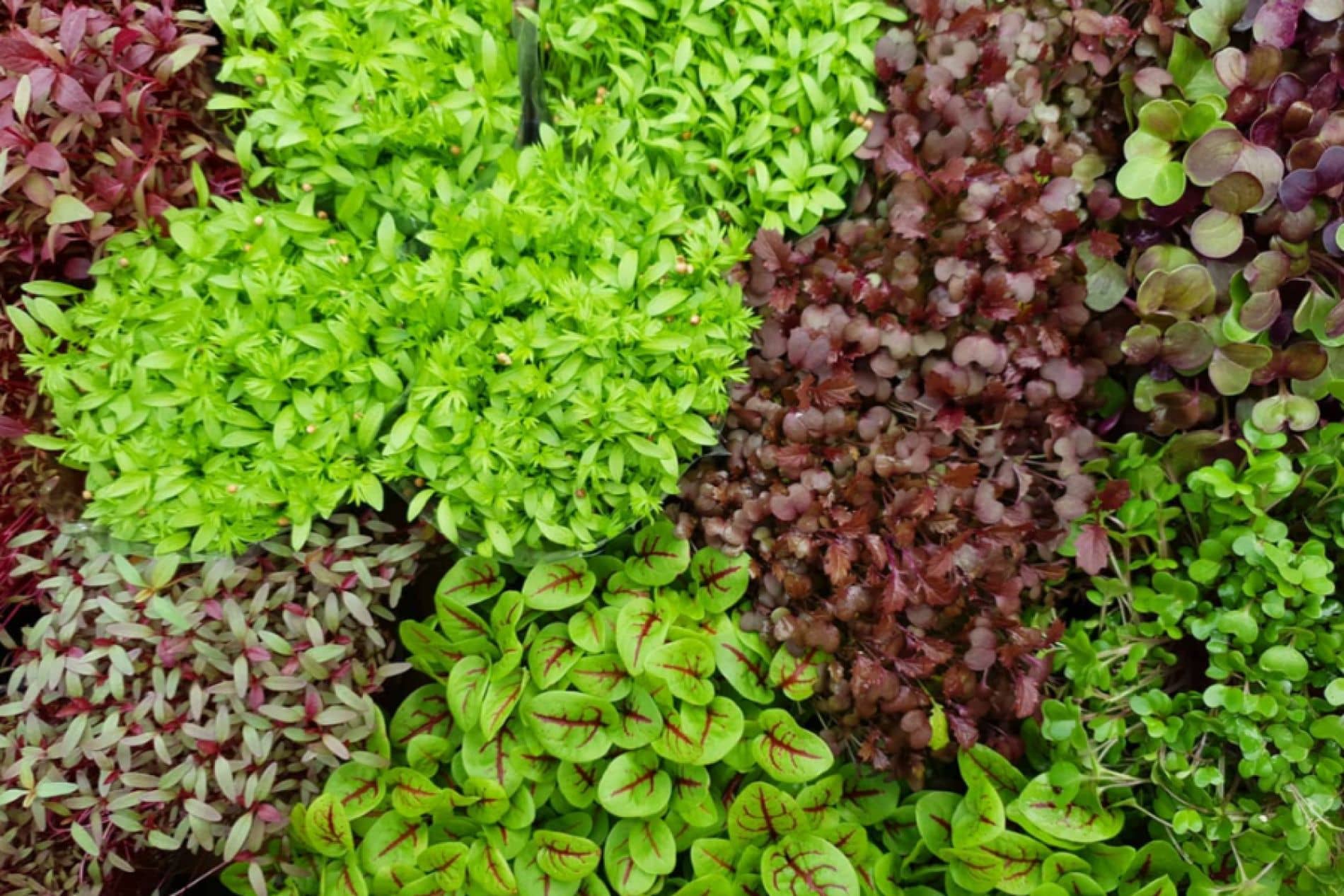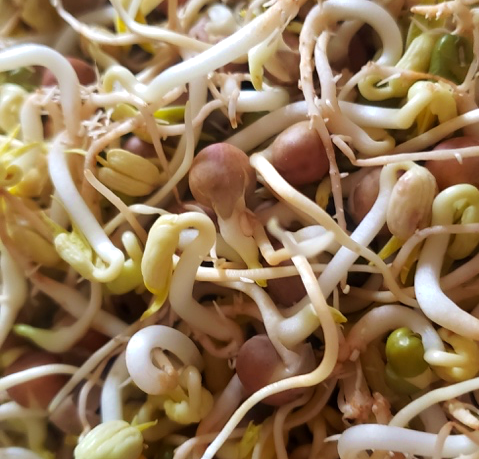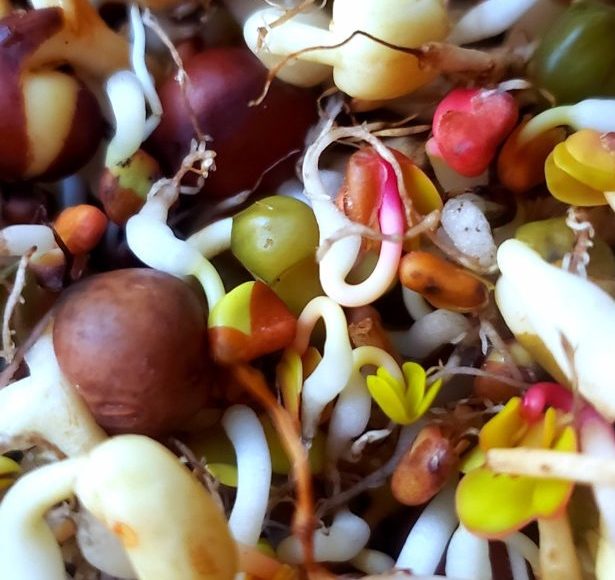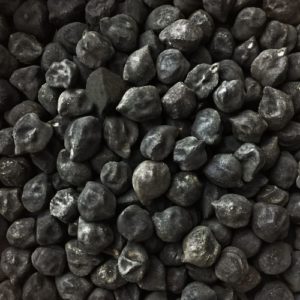
SPROUTS
BEAN
Bean sprouts are a crunchy, satisfying ingredient used in everything from salads to noodle soups. They are low in calories and have a light, fresh flavor while also a storehouse of nutrition. Bean sprouts consist of vitamins B, C, B1, B6, K and A. They are also a source of iron, magnesium, phosphorus, calcium, potassium, and manganese, as well as omega 3 fatty acids. Although many different varieties of beans can be used to grow bean sprouts, we use the most commonly consumed variety, mung bean.
![]()


SPROUTS
PEA
Sprouted peas are the pea plant seeds right when they are beginning to germinate. This food is very low in saturated fat, cholesterol and sodium. It is also a good source of vitamin C, thiamin, niacin, vitamin B6, magnesium, phosphorus, copper and manganese, and a very good source of folate.
![]()
SPROUTS
PROTEIN PACK
The protein pack is a favorite among people who enjoy sprouts or those needing to supplement their diet with extra protein. The taste is wonderful with the combination of bean and pea sprouts. This flavorful treat contains vitaminsA, B, B1, B6, C, andK, and is a great source of iron, calcium, potassium, thiamin, niacin, vitamin B6, magnesium, phosphorus, copper and manganese, and a very good source of folate.
![]()


SPROUTS
SPICY PROTEIN PACK
The Spicy Protein Pack consist of bean, pea, and radish sprouts. It is our most popular sprout as it has a nice crunch with a full earthy flavor that finishes with a peppery spice provided by the radish sprout. This combination is high in vitamins A, B, C, B1, B6, E, and K. It is also a source of iron, magnesium, phosphorus, calcium, potassium, thiamin, niacin, phosphorus, copper, folate, manganese, as well as omega 3 fatty acids.
![]()
SPROUTS
RADISH
Radish sprouts possess mild peppery flavor resembling radish plants. Other sprouts are bit bland or dull but radish sprouts make a pleasant contrast with a hit of spice. It has gained popularity as it contains naturally occurring plant estrogens which are similar to human estrogen and are helpful with symptoms associated to menopause, fibrocystic disease and hot flashes. It is a great source of vitamin B, A, E, C and K and possess chlorophyll and essential amino acids.
![]()


SPROUTS
WHEAT
Sprouted grains add variety, texture and a unique flavor to meals. Because some of the starches are broken down into sugar during the sprouting process, sprouted grains offer a somewhat sweeter taste. Sprouted grains can be eaten whole, such as in a sprouted rice salad, but more often are dried and milled into flour to make cereals, breads, pastas and other dishes. One cup of sprouted wheat berries is packed with amino acids and contains 8 grams of protein, 46 grams of carbohydrates, and 1 gram of healthy fat. Wheat berry sprouts contain vitamins B6, C, E, thiamin, riboflavin, niacin, folate, and pantothenic acid. They also contain calcium, iron, magnesium, phosphorus, potassium, zinc, copper, manganese, and selenium.
![]()
SPROUTS
GARBANZO BEAN
These Black Garbanzo Beans are a rare heirloom variety of the classic chickpea. A smaller bean (size of a large pea) with a firm texture and a full, smoky flavor with a slightly sweet taste. The nutty flavor and firm texture of the Garbanzo Bean makes it very versatile Bean. Garbanzo are often found in Indian and Mediterranean dishes. They are high in fat content and are a good source of calcium, the B Vitamins, protein and iron. Ground Garbanzo Beans are used to make fritters, dumplings and spicy breads.
![]()

